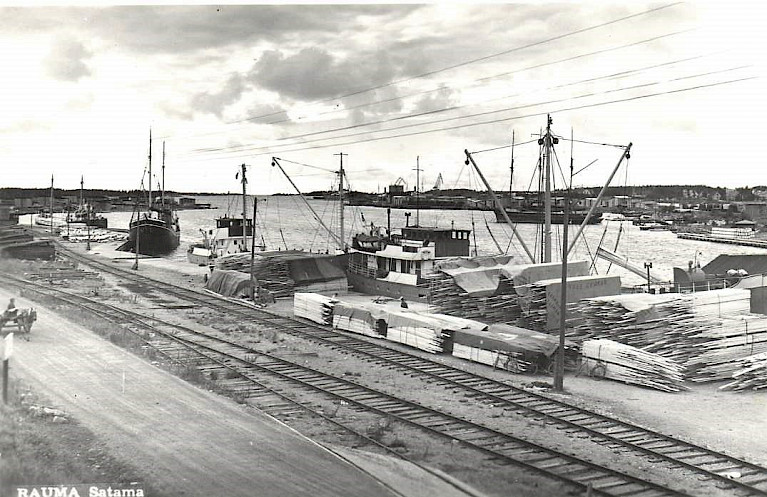
Maritime town Rauma
The sailing fleet in Rauma started to grow in the late 1860’s. The growth was due not to one single reason but to various background factors. The Customs legislation was amended in 1869, and restrictions of foreign trade were cancelled. Meanwhile, shipbuilding became productive, as both inexpensive wood and skilled shipbuilders were available in Rauma and its surroundings. A larger company, Raumo stads Rederie Aktiebolag, was established in 1868; the profitability improved for it and other shipowners in this situation.
The result was a positive circle: the shipowners’ accumulated capital was exploited in building or purchasing new ships. The larger fleets yielded higher profits that could again be invested in wider activities. The shipowners in Rauma, though, remained fairly small even in the peak years: not one of them owned fleets of dozens, unlike for instance Gustaf Erikson of Åland in the 1920’s and 1930’s. Small shipowners with just one vessel were typical. It was also common that single persons owned small shares of several ships; one could own, for example, 1/16 of one ship and 1/10 of another.
In the very last years of the 19 th century, a considerable number of inexpensive metal-hulled sailing ships built in Great Britain entered the market. Their original shipowners moved on to steam ships, selling their old ships away. Many such ships were purchased in Rauma, the first one of them was fullrigger the Winefred, purchased by J.W. Söderlund in 1894. Such purchased ships caused the Rauma town shipbuilding activities to cease in the 1890’s.
Where did the ships go from Rauma?
The sailing ship fleet of Helsinki outgrew that of Rauma in 1898, and Rauma never regained its status as the biggest sailing ship town in Finland, but its flourish did not end here. A significant drop in the total tonnage occurred in the early 20th century, when the two biggest shipowners, J.W.Söderlund and G.Granlund, died. Instead of continuing the business, their heirs sold the ships. Part of the ships were purchased by other shipowners in Rauma, while such large steel ships as Söderlund’s Fennia, Favell and Glenard were sold to Helsinki to serve as training ships.
New sailing ships were acquired, but the shipowners in Rauma no longer saw their future in cargo carrying sailing ships at the turn of the 1910’s. The new century was to be one of steam ships. However, the sailing ships did not disappear immediately: the last sailing ship from Rauma, barquentine Uljas, kept sailing until 1941. She remained in the ship registry until 1950, when it was ceremoniously burnt and sank. Finished in 1891, the Uljas was the last sailing ship built in Rauma.